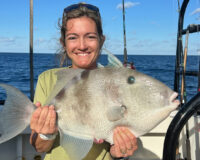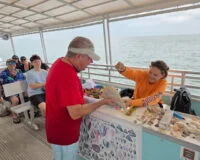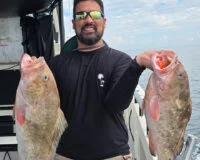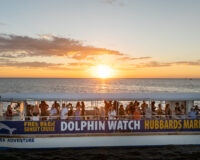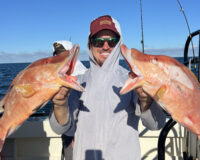Inshore Fishing Report


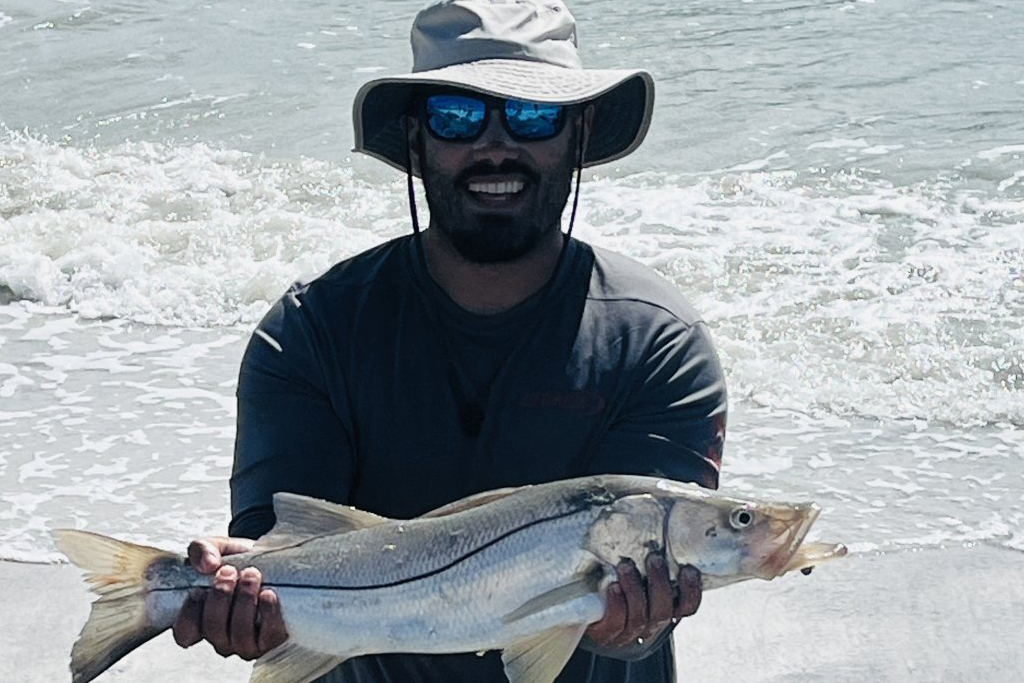
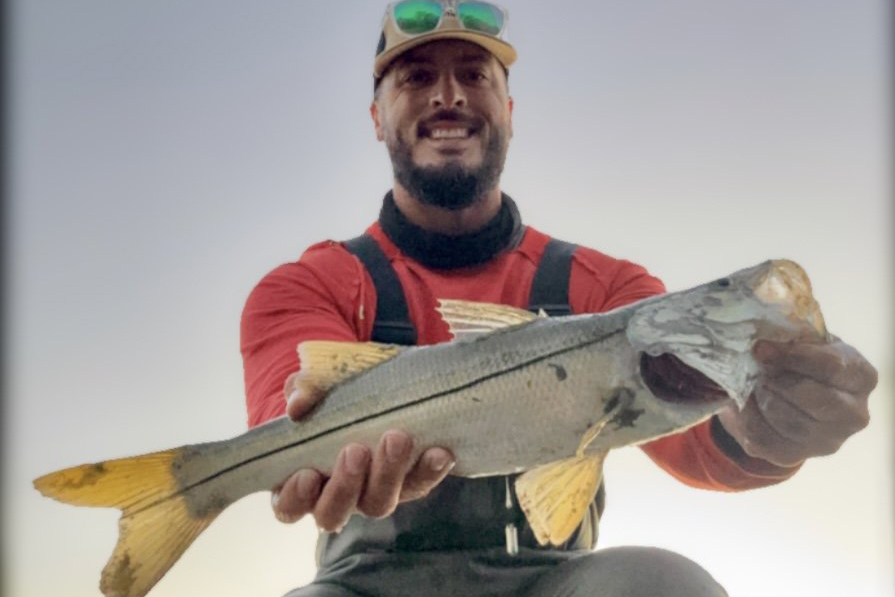
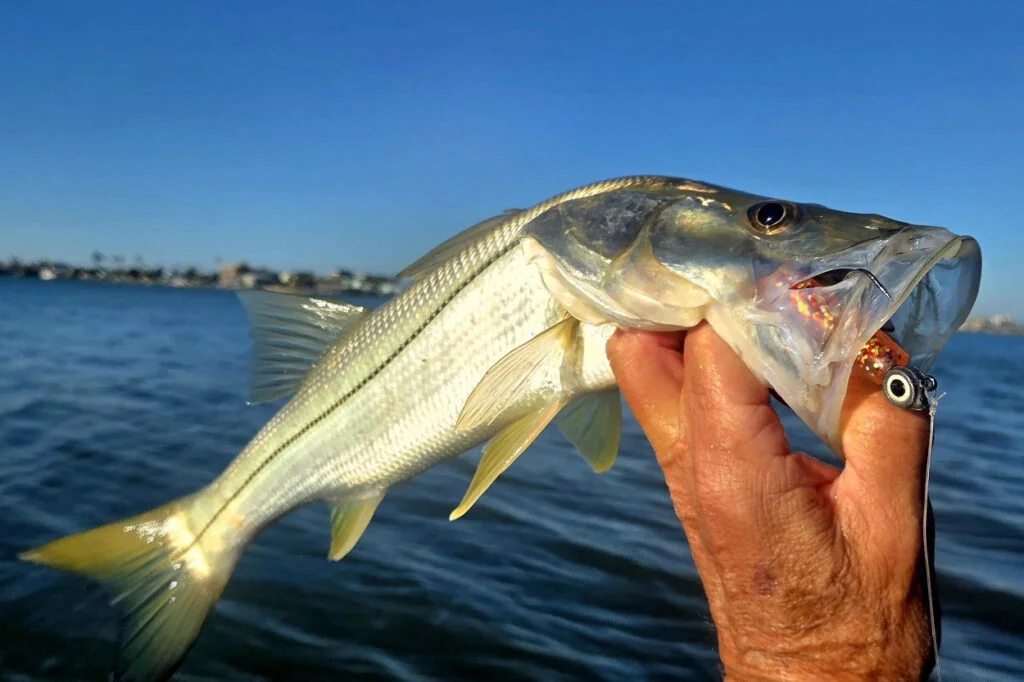


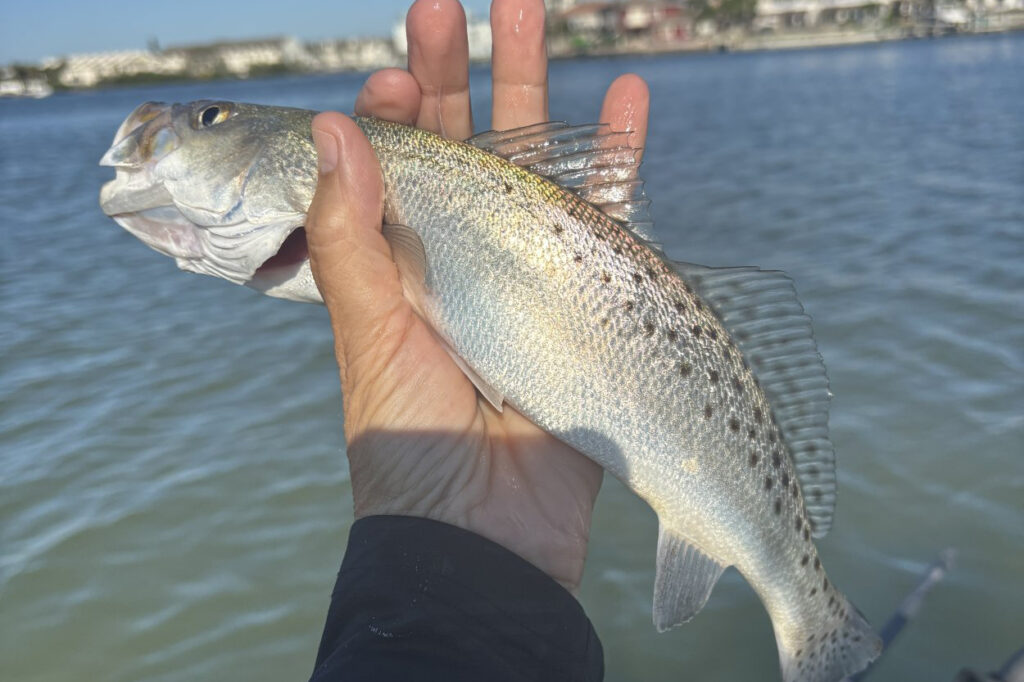
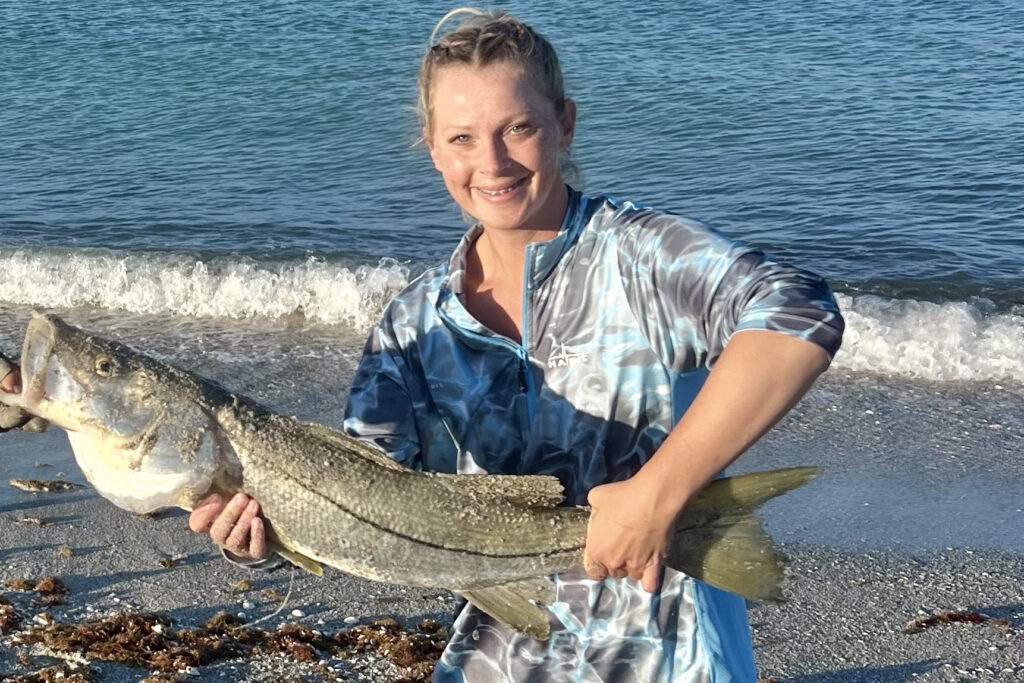

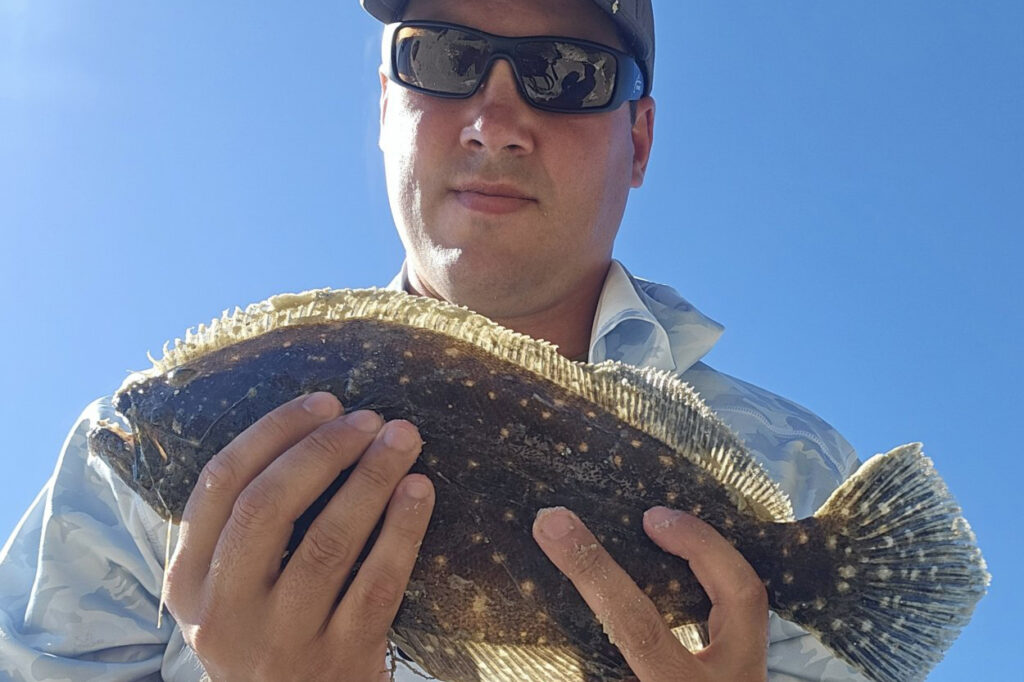
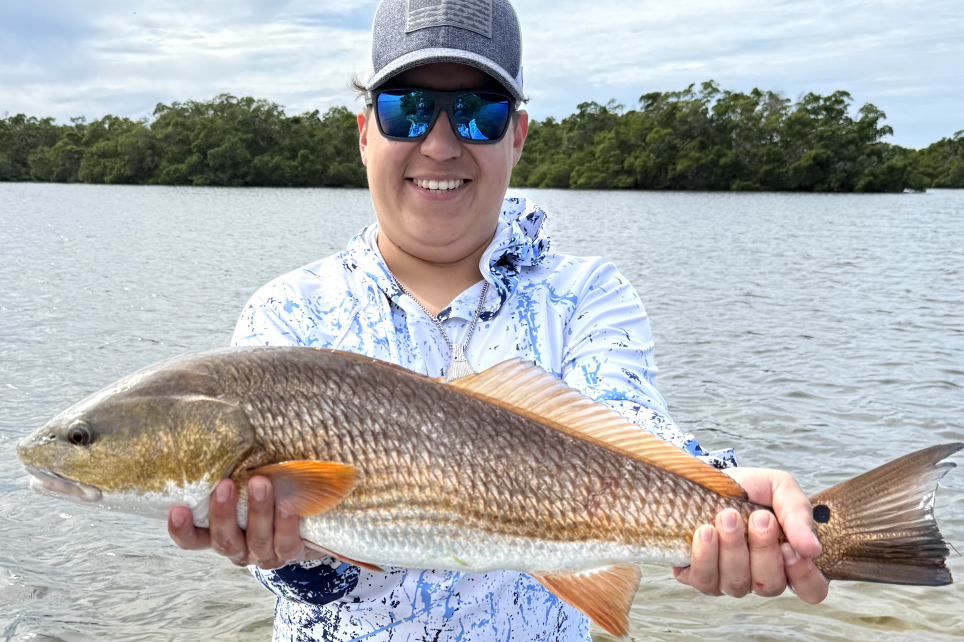
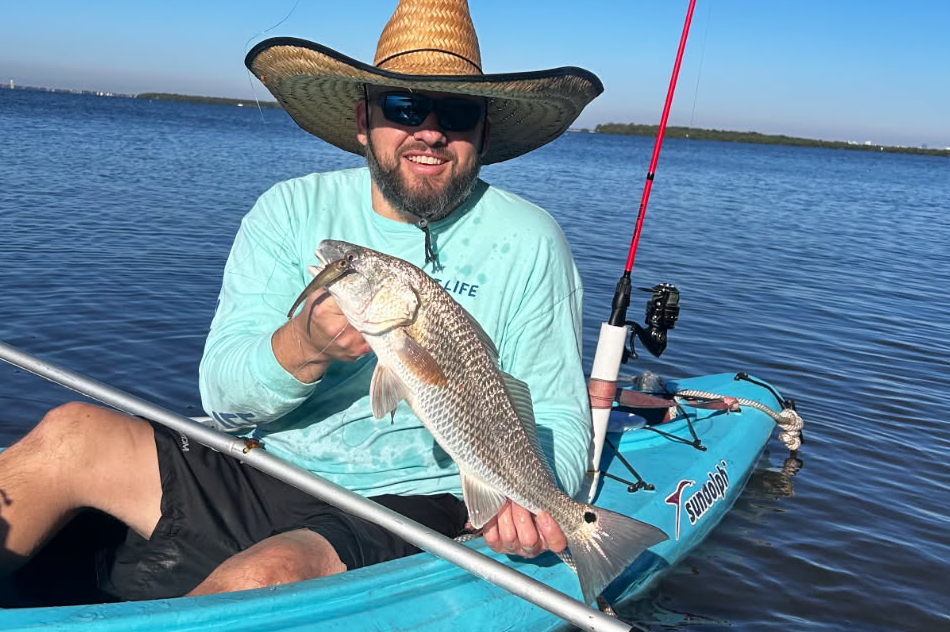





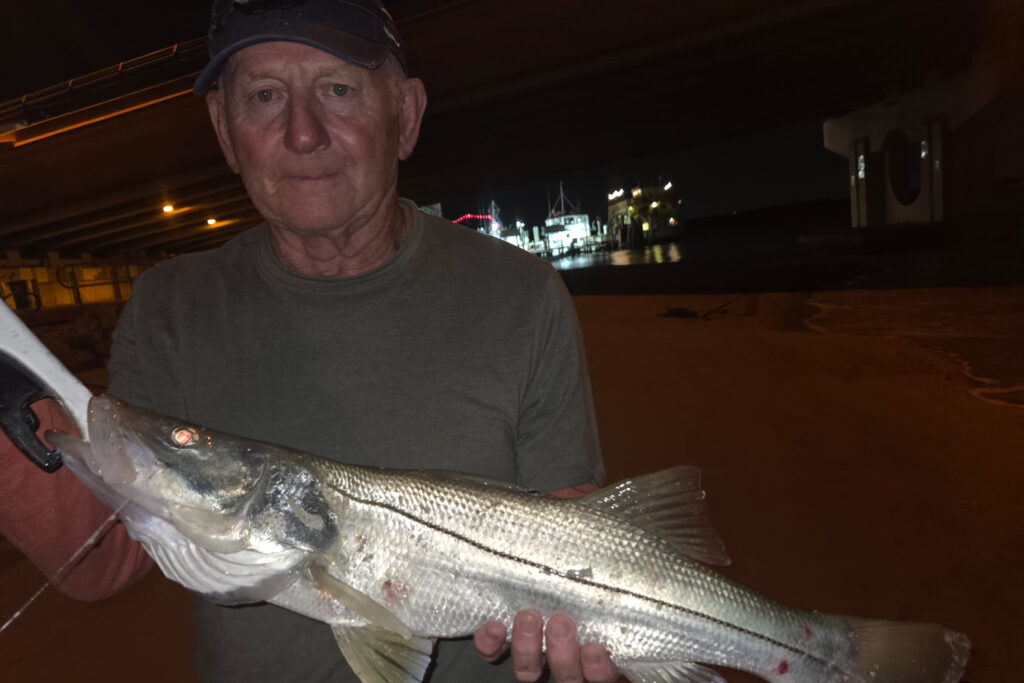
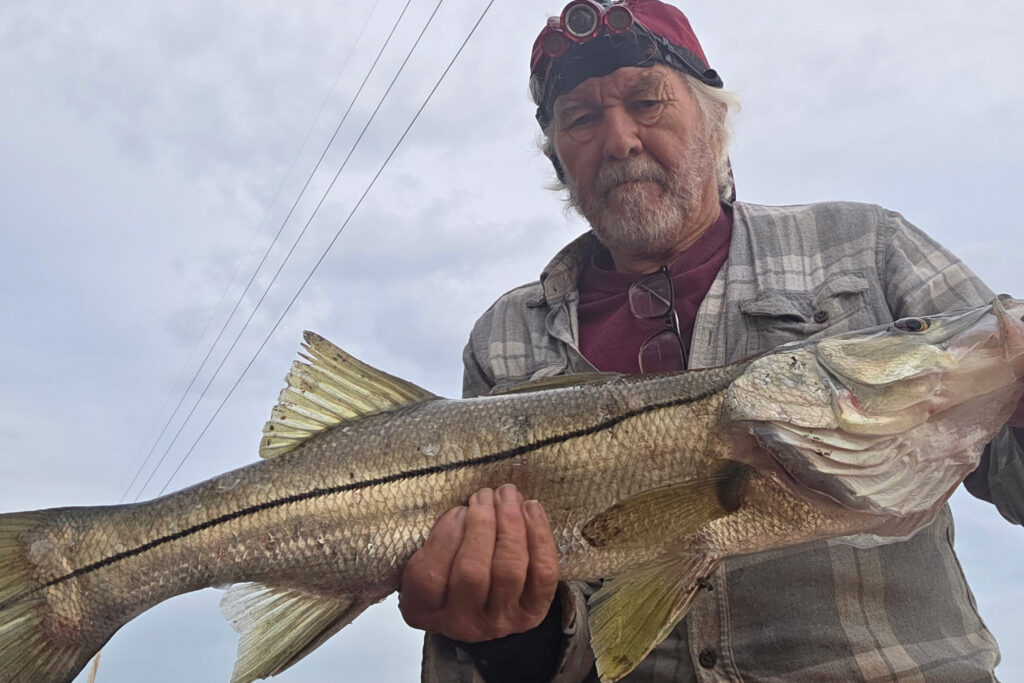
Snook have pushed back heavily into the upper and back bays with the shorter photo period and cooler mornings. They’re staging at sun‑drenched, wind‑protected shorelines and ambush points like creek mouths, mangrove points, and deeper edges. Fish the solunar majors and minors with slow‑rolled paddletails, shrimp imitations, or live white bait. Midday, think shade and flow— docks, bridge pilings, and deeper troughs.
Redfish are on the move and feeding. Follow the mullet schools across the flats, oyster bars, and island points. When they get picky, switch to cut offerings: fresh threadfin, ladyfish, or pinfish chunks on a 2/0–3/0 circle hook with 20–30 lb leader. On higher tides, push tight to the bushes; as water falls, work the edges and potholes.
Trout are biting well and sliding shallower during cooler mornings, then easing to the edges by mid‑day. Target 3–5 ft grass/sand mix with soft plastics on 1/8–1/4 oz jigheads or free‑lined live shrimp. At night, dock and bridge lights can be loaded— present small baits naturally and avoid heavy hardware.
Flounder have been active on sandy seams adjacent to structure—jetty eddies, beach troughs, and the sand skirts around docks. Hop a bucktail or a 3–4″ grub tight to the bottom and cover ground; long pauses trigger strikes.
Sheepshead numbers are building. Work pilings, rock piles, and jetty corners with small pieces of shrimp, fiddler crabs, or oysters on size 1–1/0 hooks, light leader, and just enough weight to hold.
Spanish mackerel around deeper passes and bridges on moving water. Fast, flashy spoons or gotcha‑style plugs shine; long‑shank hooks help with teeth. Small black drum may mix on the flats and oysters; bigger drum patrol bridges—bring crabs or larger shrimp.
Fishing Tips
- Snook: Use live baits like greenbacks, threadfins, and shrimp, or try flair hawks and soft plastics at night.
- Redfish: Look for them around mangroves, oyster bars, and flats, and use dead baits during higher tides.
- Trout: Target them with soft plastics, white bait, and shrimp around deeper flats and potholes.
- Tarpon: Target them during the full moon with crab flushes, making it an ideal time to target them.
- Flounder: Find them near sandy bottoms and structures, biting on bottom baits.
- Pompano: Be prepared to move frequently to stay on their bite.
- Sharks: Use big dead baits in areas with moving water.
Help spread the word about what to do if you hook or entangle a bird. Never cut the line; instead, reel in the bird carefully to dehook and release it. If you accidentally hook a dock, break the line at the hook to avoid leaving any line in the water. Seabirds with fishing lines hanging from them are becoming more common, and this could lead to the closure of fishing areas.
Rising concerns about bird entanglements might result in closing fishing spots, impacting the few available locations around Tampa Bay from shorelines, docks, bridges, or piers. Learn more in our podcast with Salt Strong: https://www.saltstrong.com/articles/shutting-down-fishing-at-busy-pier/.
NEarshore Fishing Report

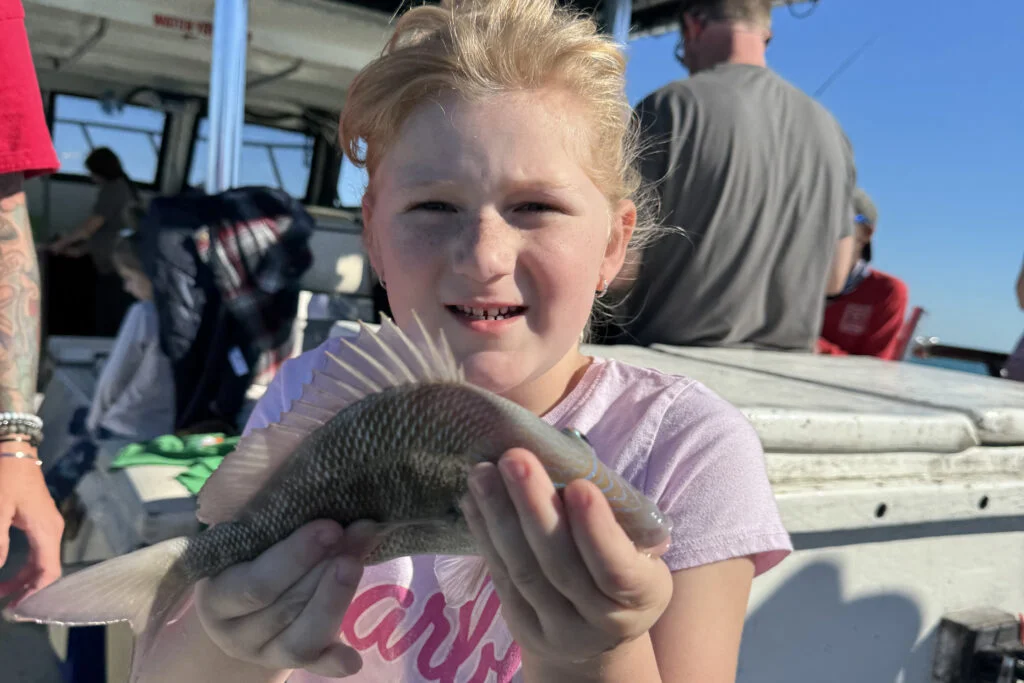
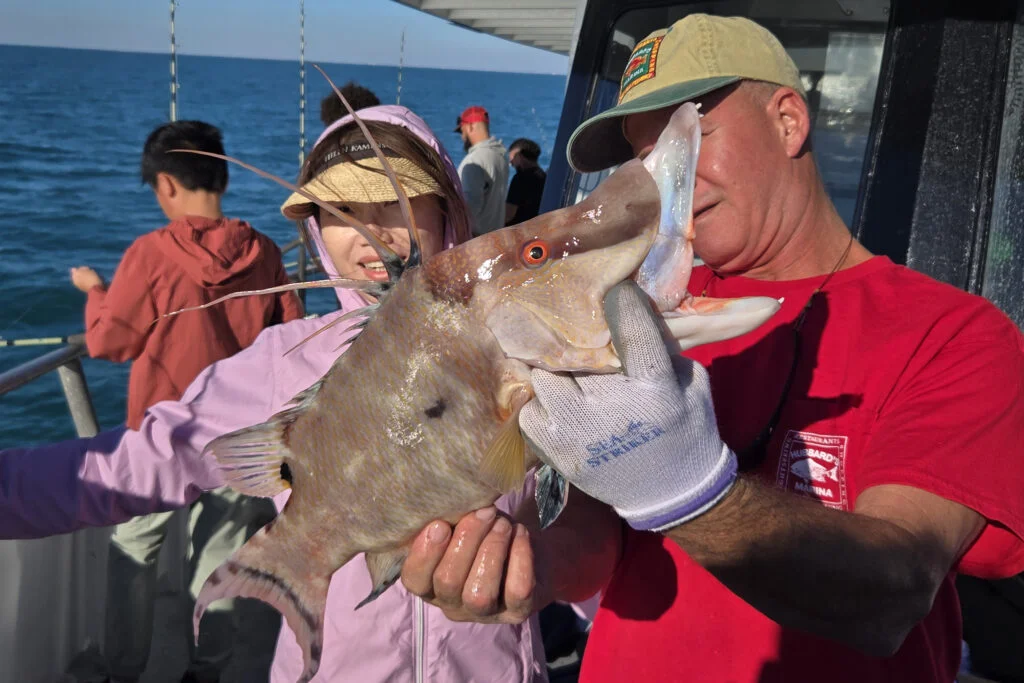
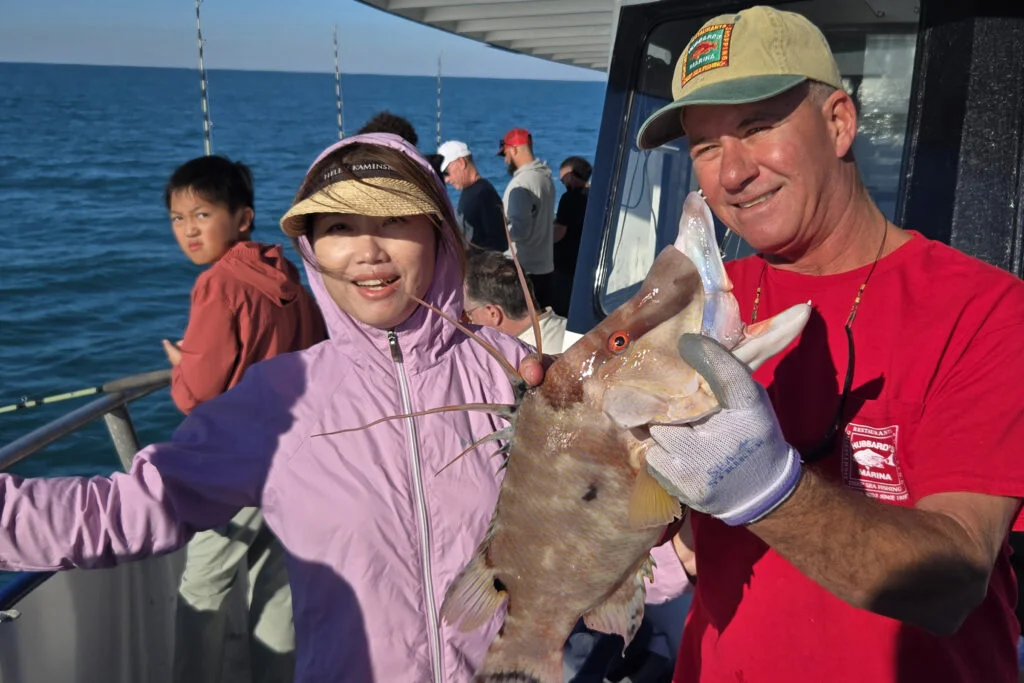



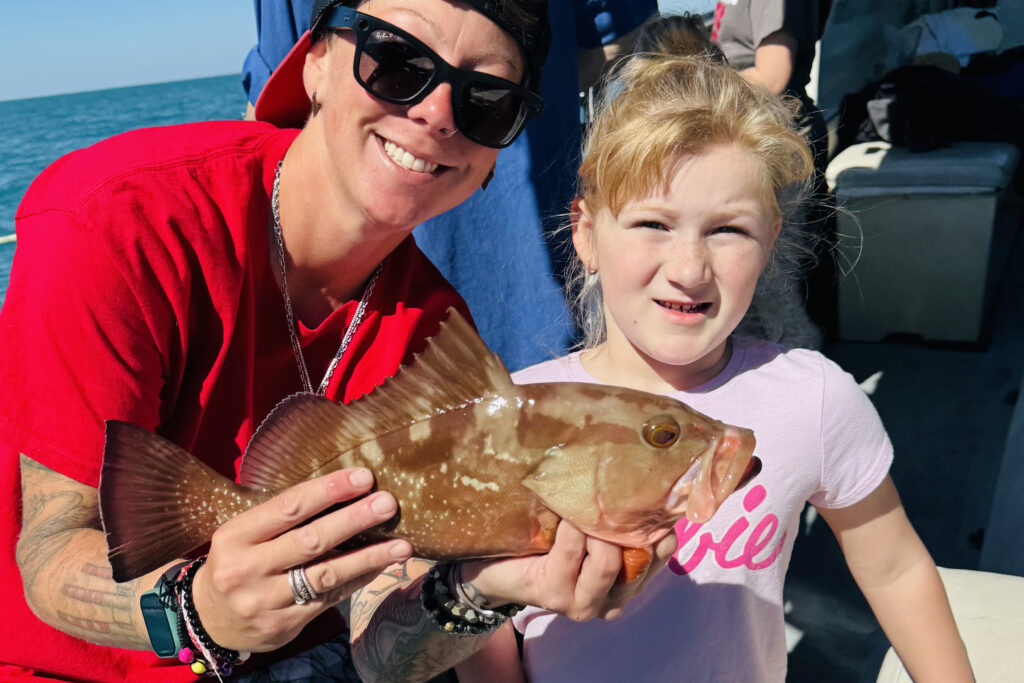
Hogfish are a headline target right now. Cold snaps bunch them up; stable weather keeps them chewing. Our go‑to is live shrimp on light tackle: 4000–5000 series spinner, 20–30 lb braid to 10–15 ft of 30 lb mono/fluoro, knocker rig with 1–2 oz egg sinker and a 3/0–4/0 hook. Think smaller ledges, patches of flat hard bottom, and shell seams in 40–70 ft. Work patiently—grunts and porgies usually fire first, then the hogs.
Mackerel are thick and bait pods are pushing threadfins along the beaches. Have a trolling spread (spoons, planers, small plugs) ready on the way out, and a flat‑line ready over structure. Kingfish are in the mix—wire or long‑shank options help and keep a pitch rod rigged with a stinger for sky‑rocket bites.
Lane Snapper are steady, especially deeper near shore (50–90 ft). Squid gets quick action; bigger lanes prefer live shrimp or smaller threadfin chunks. Mangrove Snapper have been hit‑or‑miss in the shallows but improve as you stretch toward the deepest near‑shore edges—downsize to 30–40 lb leader, 3/0–4/0 double‑snell with 1-2 inch long threadfin chunks.
Red Grouper are occasional near shore; the keeper ratio improves with depth. If you stay inside 100 ft, commit to moving until you find a good patch of flat hard bottom or small potholes, then feed them whole squid, bonita strips, or lively pinfish.
Fishing Tips
- Red Grouper: Target the deepest near shore waters with big dead baits or solid live baits. Use 60 lb test and 7/0 hooks for best results.
- Red Snapper: Use big dead baits like whole squid and bonita strips with heavy tackle to focus on larger fish. Prime trips include the 12-hour extreme, 39-hour, and 44-hour trips.
- Scamp Grouper: Use small to medium pinfish and cut threadfin, especially while targeting mangrove snapper.
- Mangrove Snapper: Near shore, use live shrimp and small chunks of threadfin on 30-40 lb test with 3-4/0 hooks. Offshore, use bigger chunks of cut threadfin or medium pinfish on 40-60 lb test with 5-7/0 hooks.
- Vermillion Snapper: Start around 100 feet of water using cut squid or threadfin. These fish are aggressive and not leader-shy.
- Yellowtail Snapper: Use shrimp, cut squid, and threadfin.
- Pelagic Species: Keep flat lines and pitch rods ready for sailfish, kingfish, wahoo, tuna, and mahi mahi.
Offshore Fishing Report
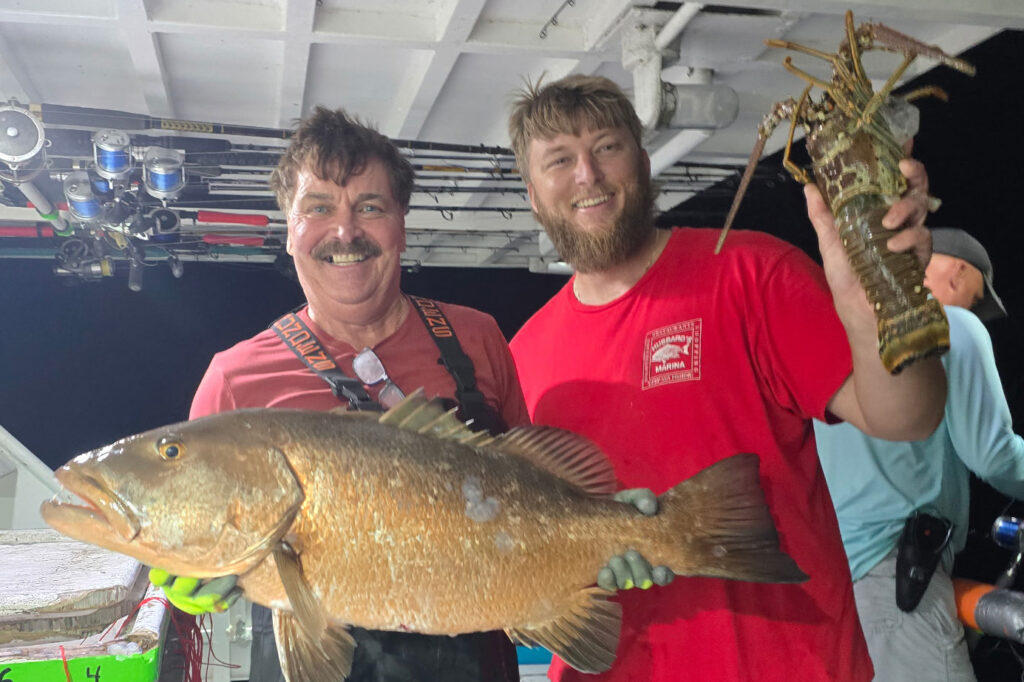
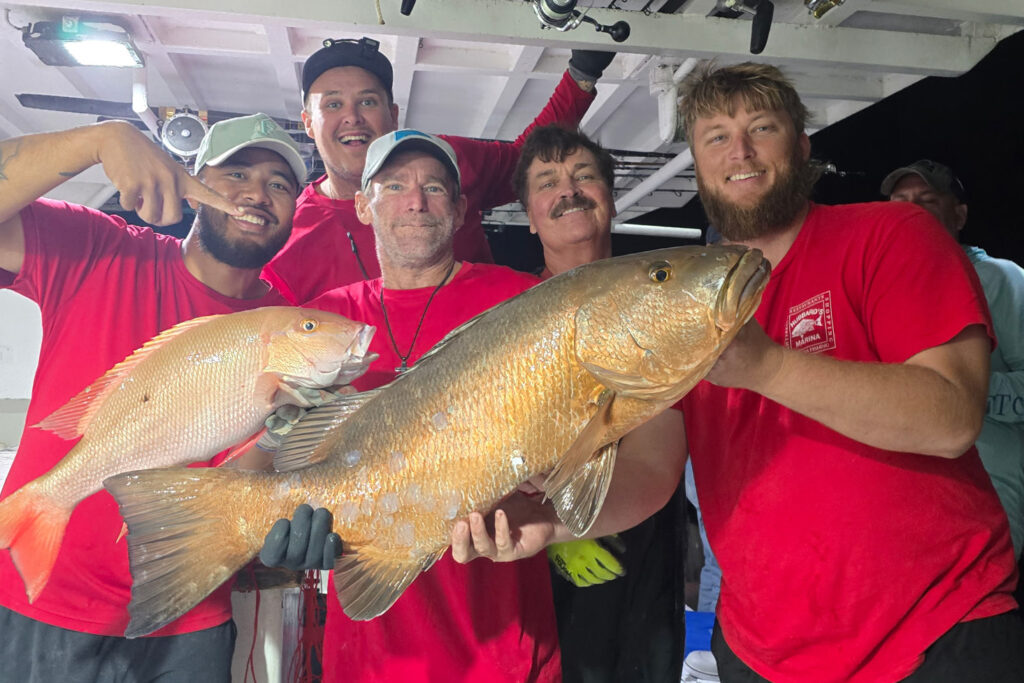
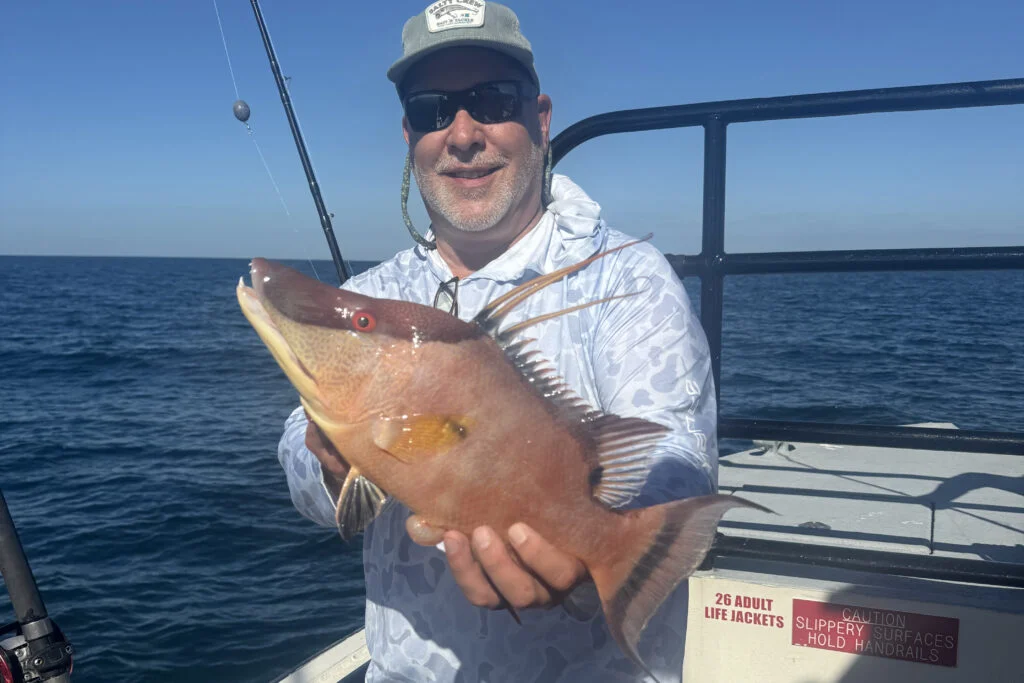
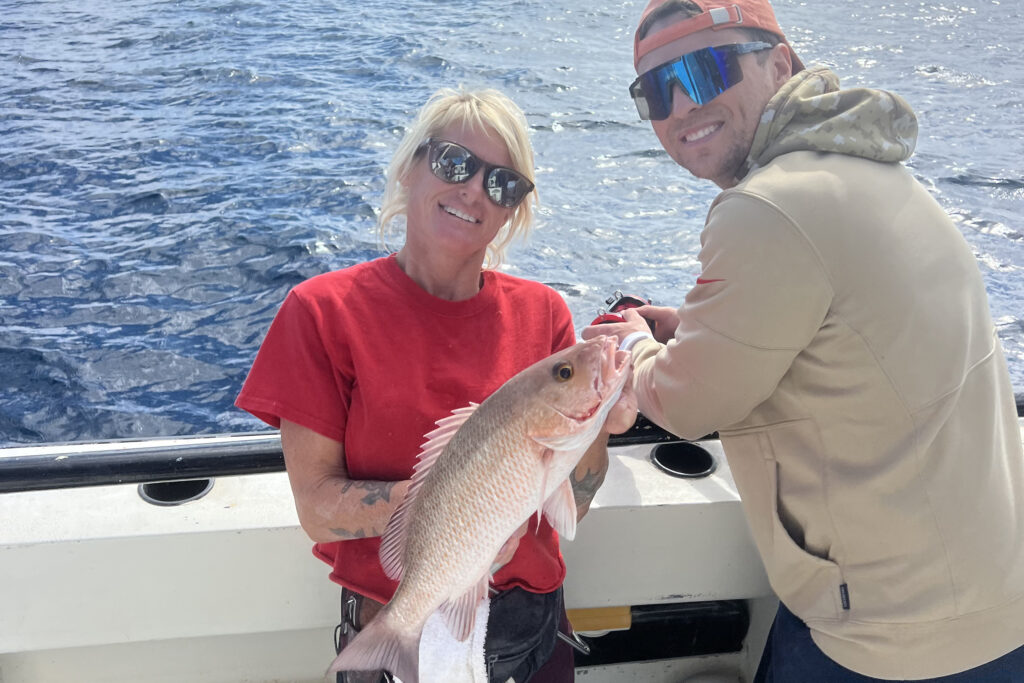

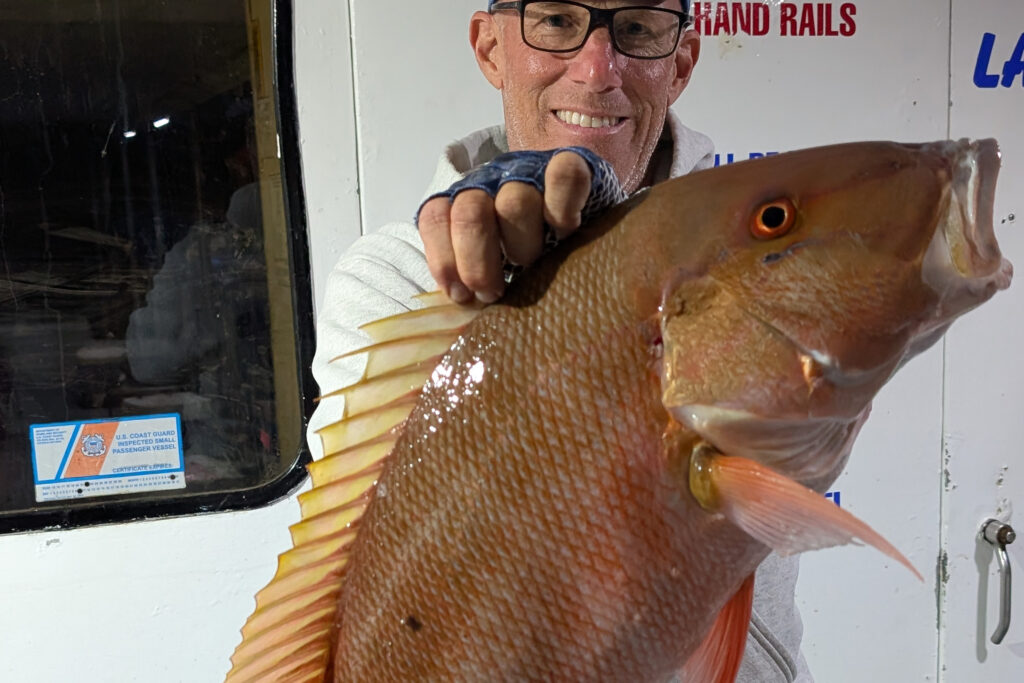
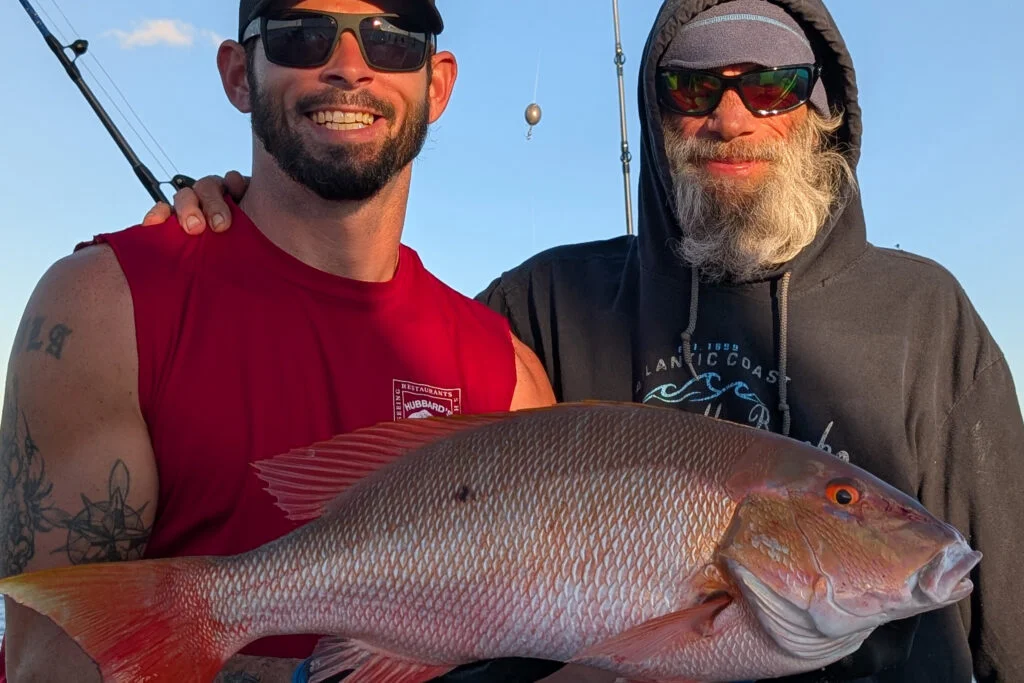

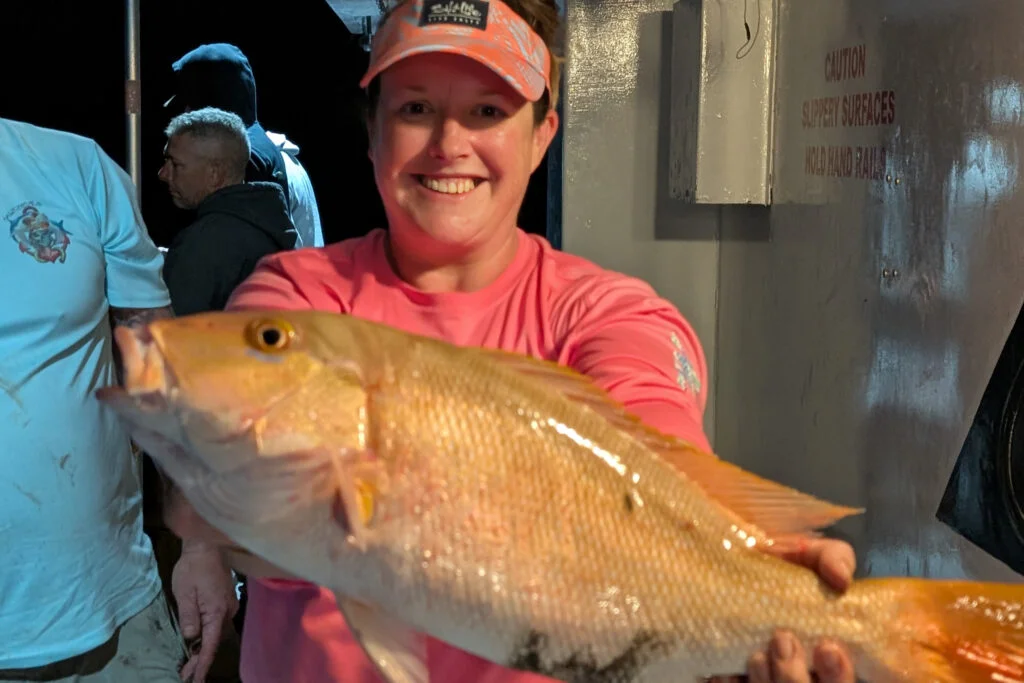
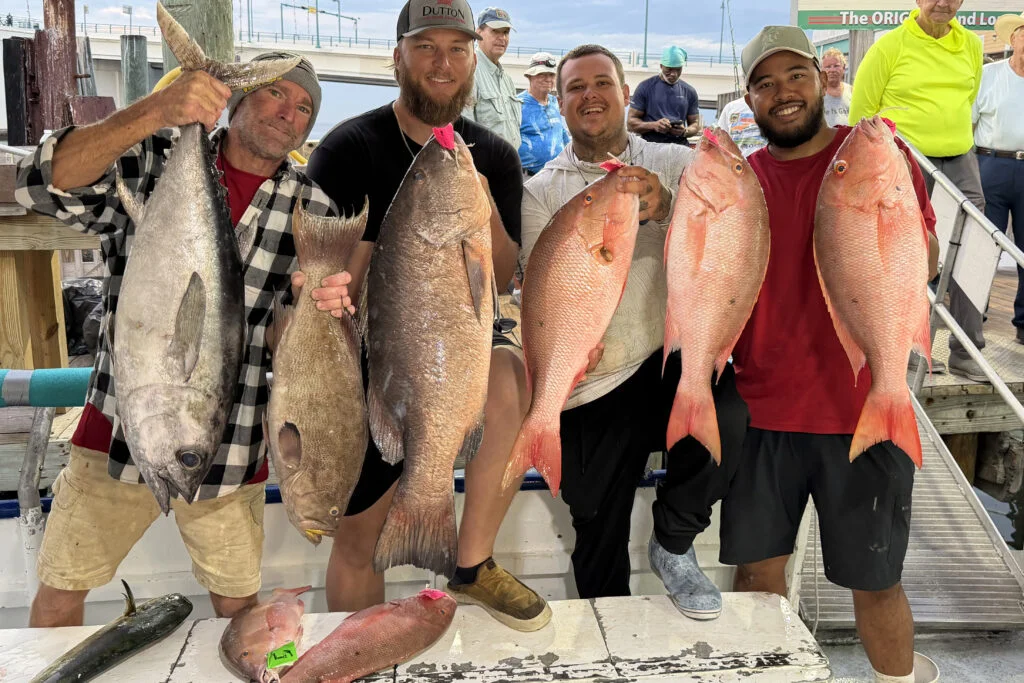



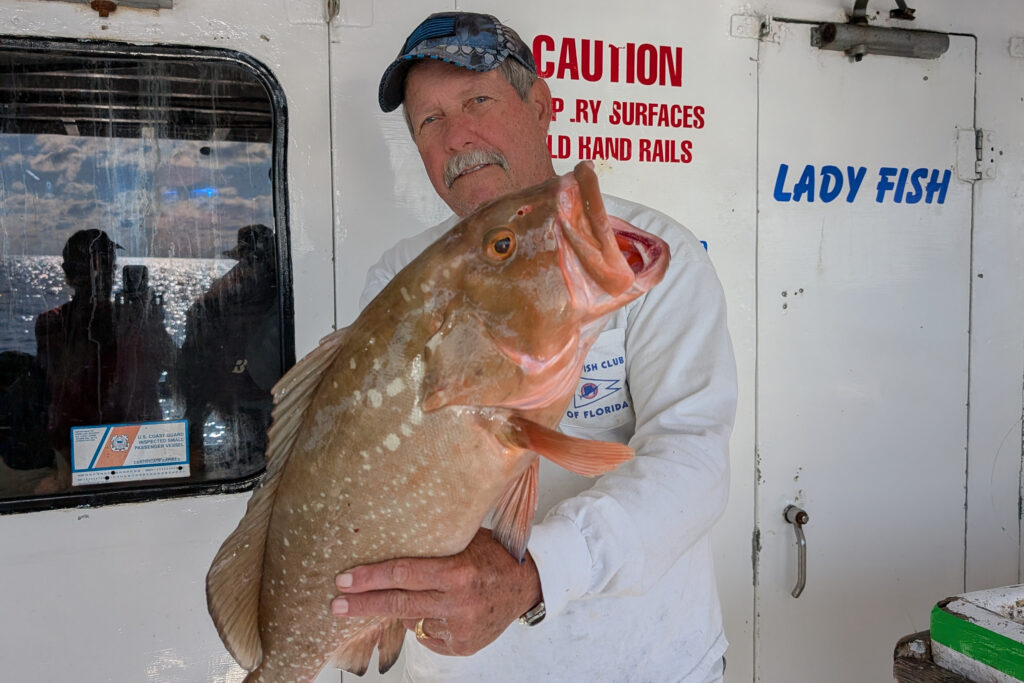
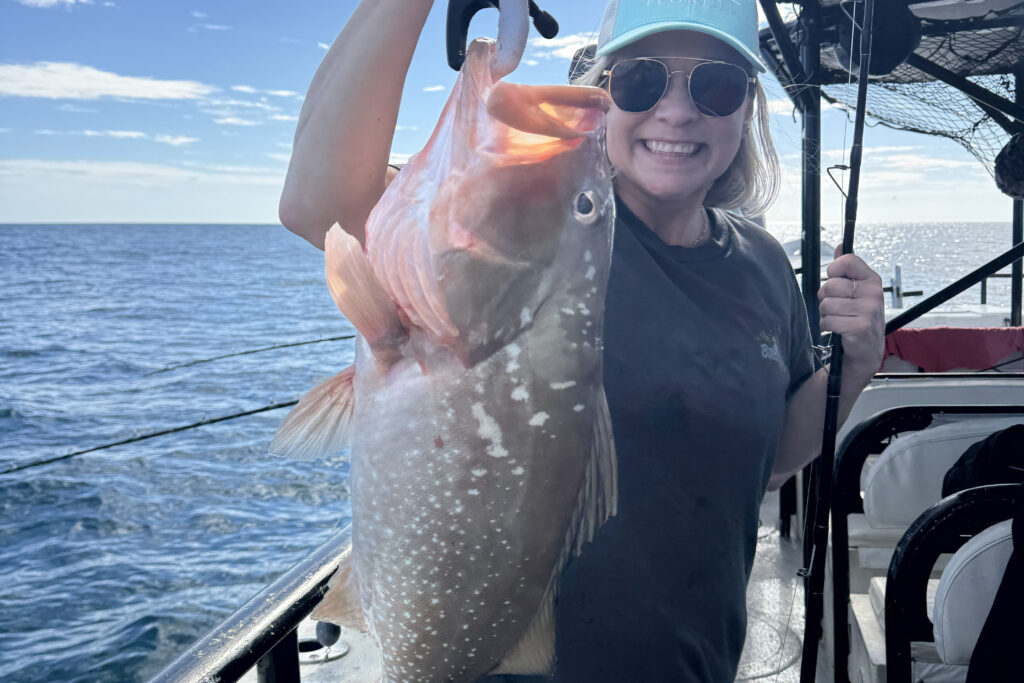
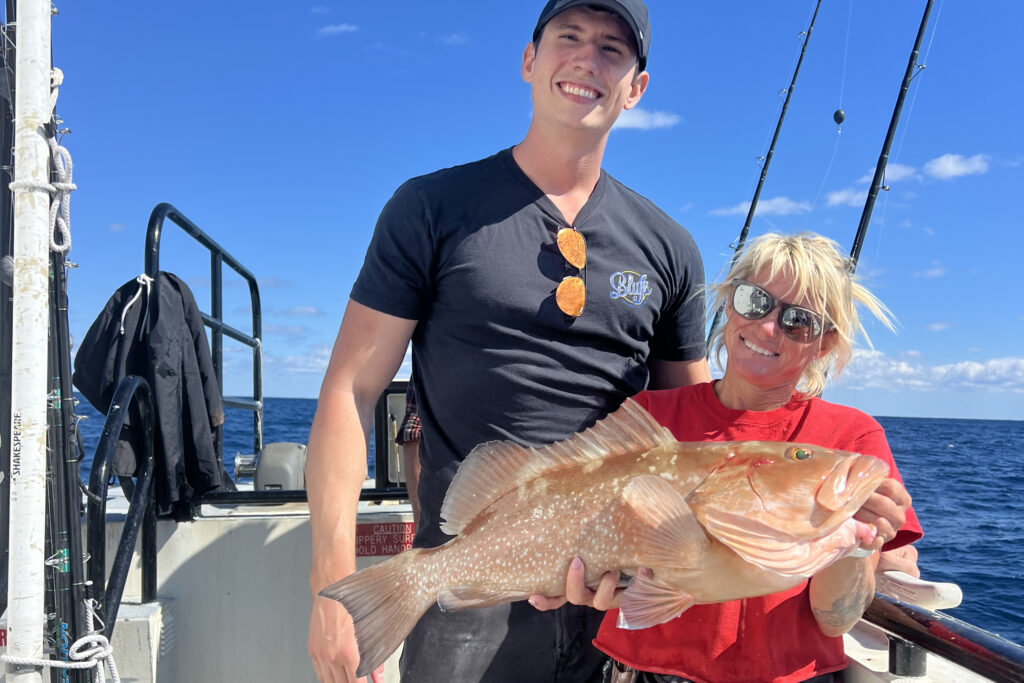
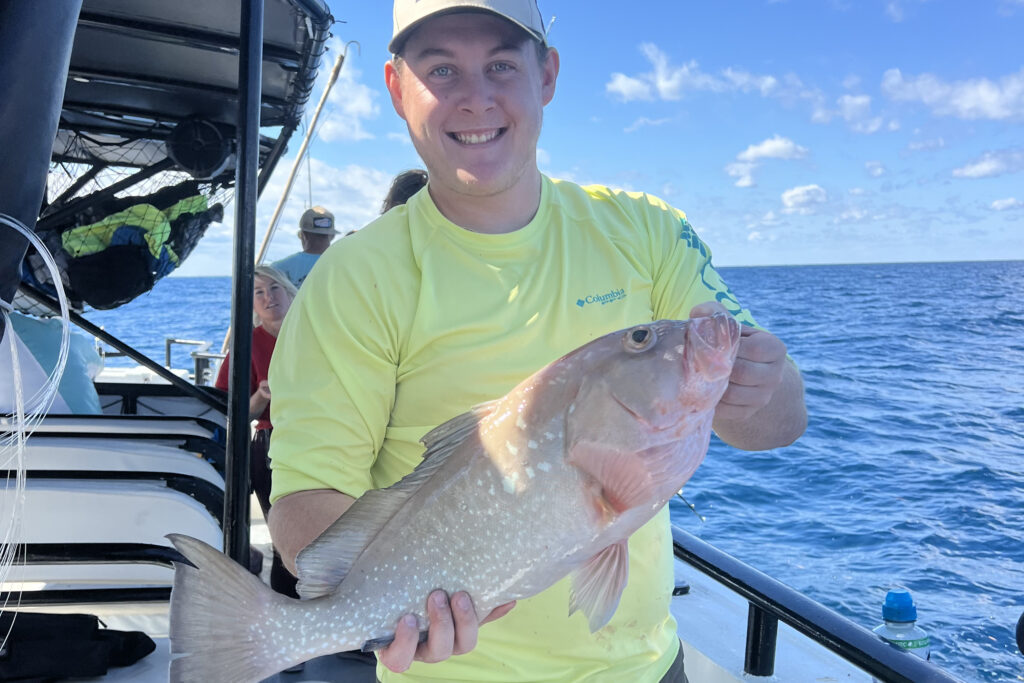
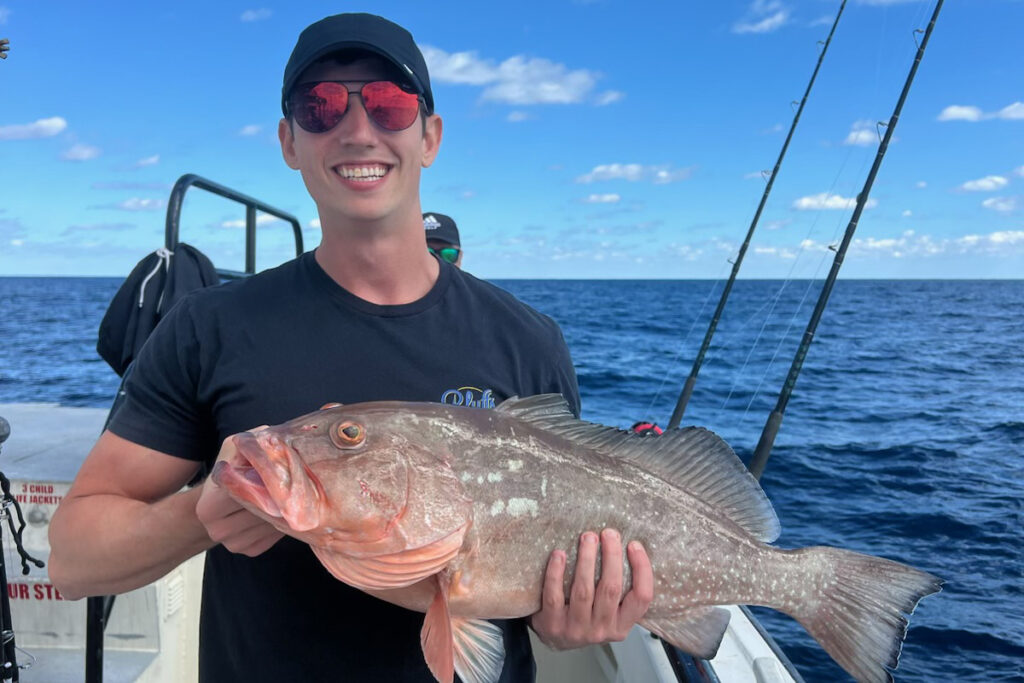



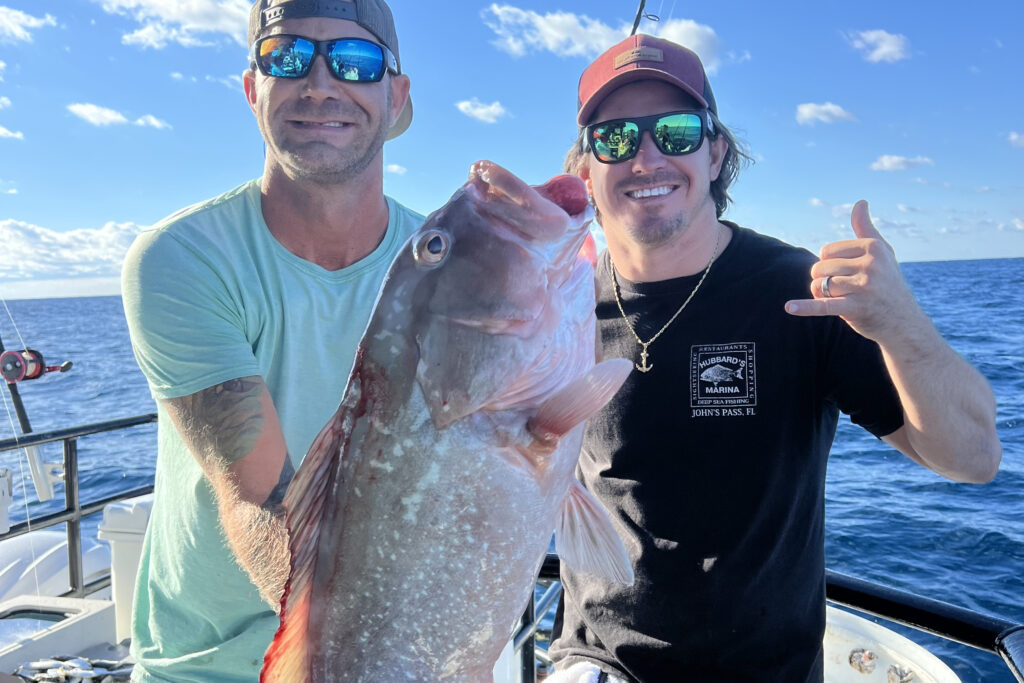


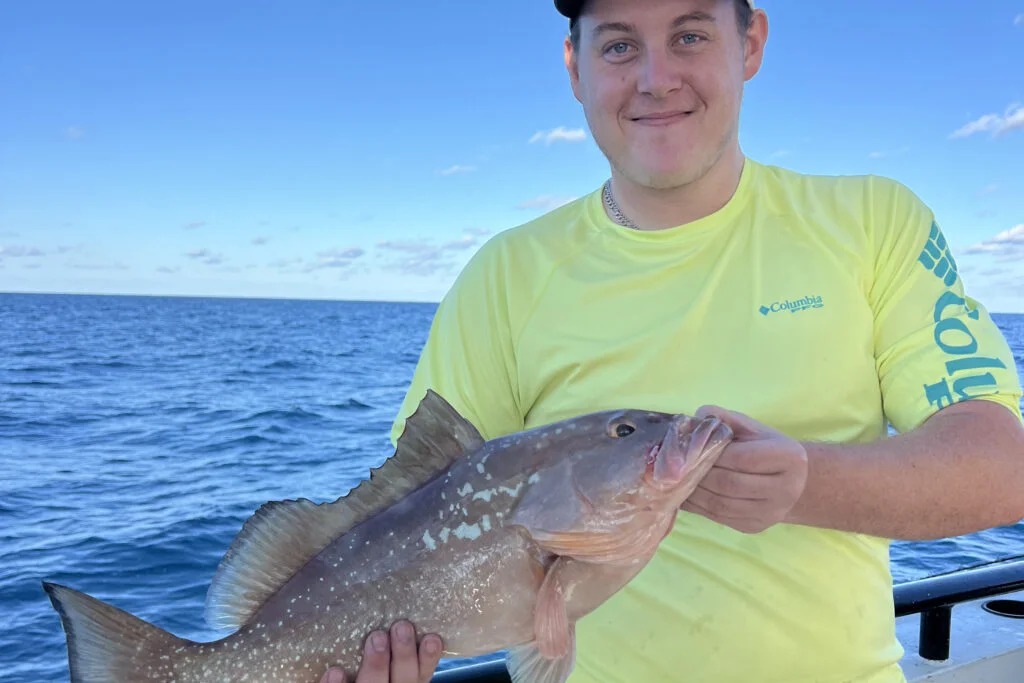
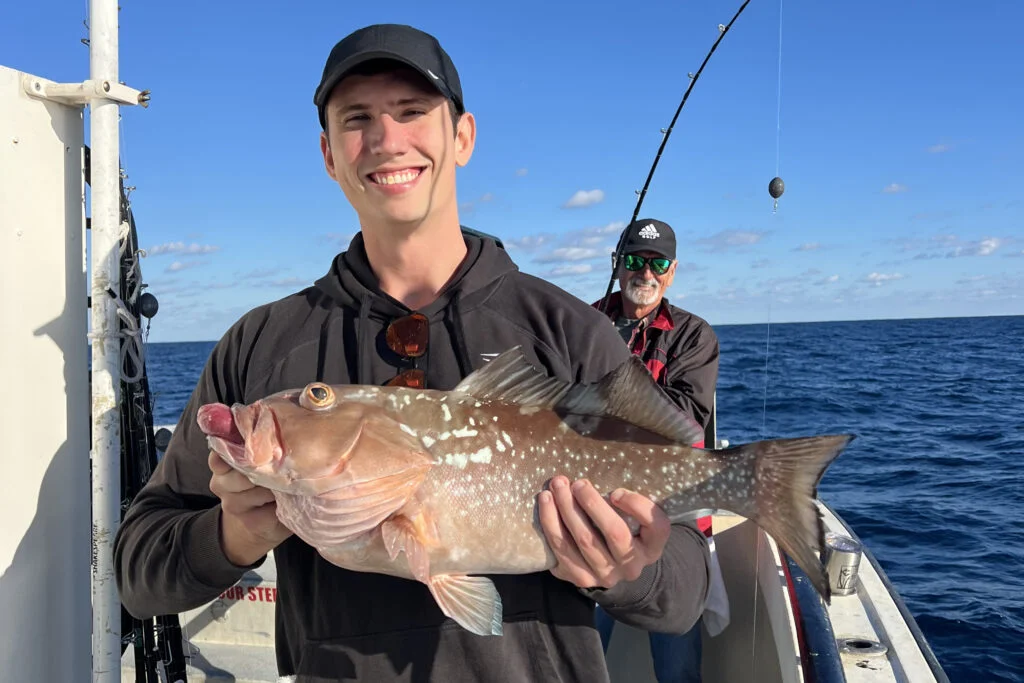


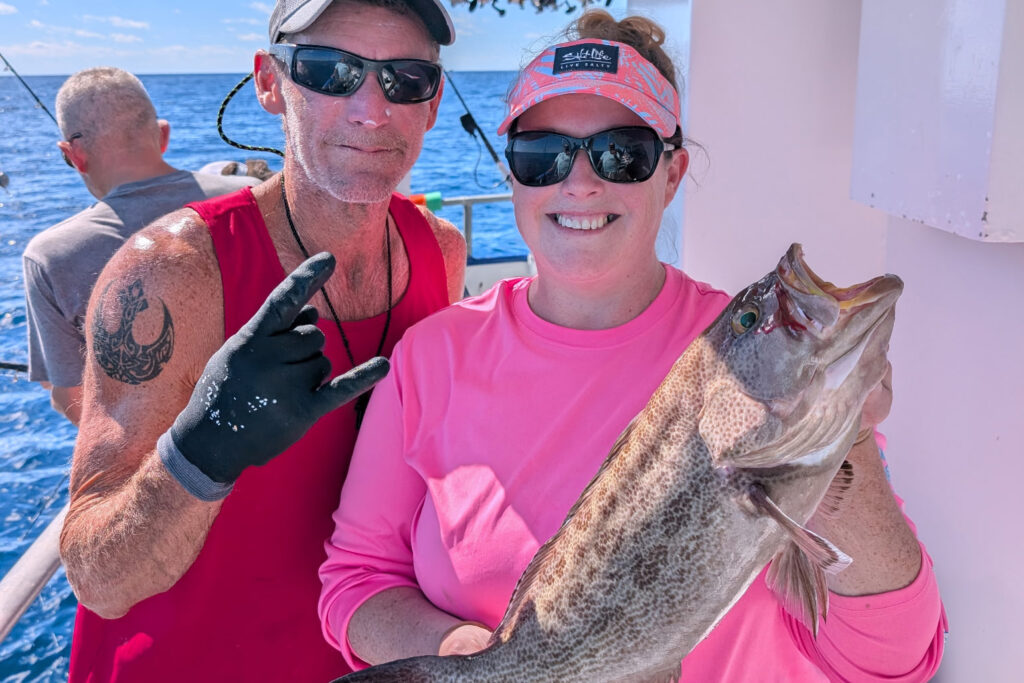

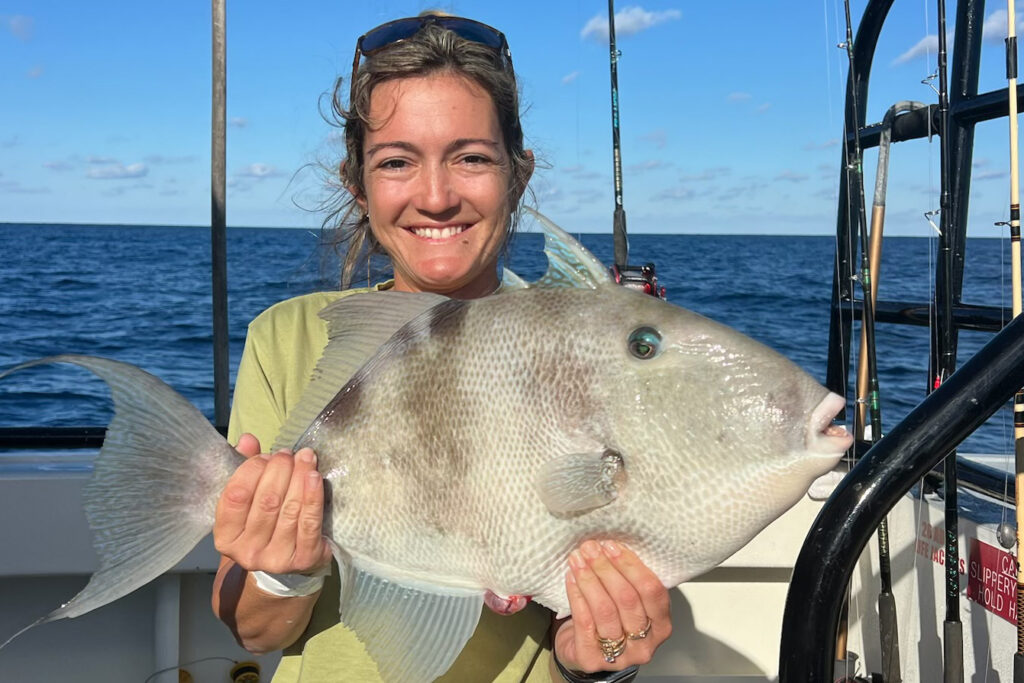
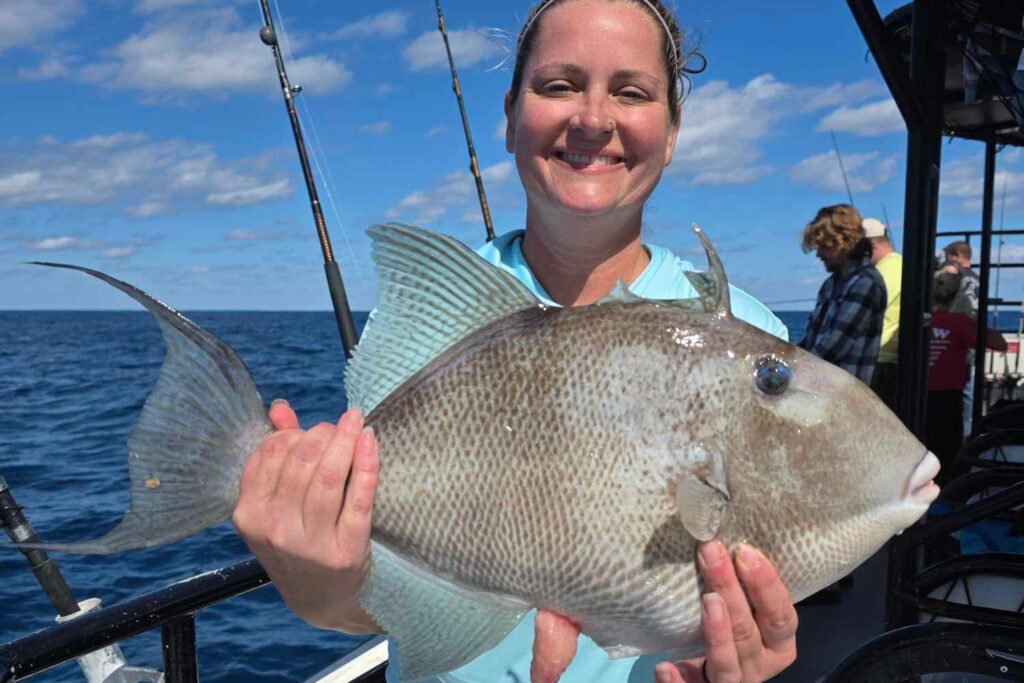
Red Grouper remain the principal target over flat hard bottom, potholes, and low relief ledges. Big dead baits—bonita strips, whole squid, Boston mackerel—and stout live offerings (pinfish, squirrel fish) on 60–80 lb leader and 7/0–10/0 circles are the ticket. Keep hopping until you land on life, then grind in that depth range to fill up on the numbers. Stick and move is the game.
Mangrove Snapper are steady with quality fish in the mix. Cut threadfin on a 5/0–6/0 double‑snell is our workhorse; for the real bruisers, step up to small/medium pinfish on 40–60 lb leaders. Yellowtail Snapper respond to lighter tackle (around 40 lb), smaller hooks, and thin squid strips— especially near dusk, dawn, and at night.
Mutton Snapper have been a welcome surprise—fish a medium pinfish on lighter leaders and be patient. Triggerfish are chewing on 2″ chewy squid or bonita strips; keep baits compact for their small mouths. Scamp Grouper show when your fishing some ledges or potholes with medium pinfish and 50–60 lb leader.
Pelagics: keep a flat‑line or two set—blackfin tuna, kingfish, mahi, and the occasional wahoo have been cruising. Jigs and live baits get opportunistic strikes while you’re bottom fishing; on the move, small lipped divers and feathers cover water efficiently.
Don’t forget, that we have some great videos on our fishing tips and tricks page here to show you how to target and rig for almost any species-> https://www.hubbardsmarina.com/fishing-tips/
Remember that when fishing in deeper nearshore and offshore federal waters, the Descend Act requires you to have a descending device or venting tool “rigged and ready.” If you know how to use a venting tool, keep it prepared. If not, here’s some helpful advice: https://bit.ly/3L5HTnv. Using a descending device is straightforward and doesn’t require as much precision or practice as venting. Return em’ Right has a training course only takes about 10-15 minutes, and you can learn valuable techniques to protect our offshore fishery. Spread the word by visiting: https://returnemright.org/.
TERMS OF REFERENCE-
Inshore: This covers the areas from the inner bays, through the bridges, and right up to the beaches.
Near Shore: This includes the coastal waters from the beaches up to twenty miles offshore, or up to a depth of 100 feet.
Offshore: This extends from twenty miles offshore or from a depth of 100 feet and beyond.
For more fishing reports, photos, videos, and other content, check out Hubbard’s Marina on Facebook, Instagram, YouTube, TikTok, Twitter, Pinterest, or Snapchat by searching for @HubbardsMarina. Remember our family motto: “If you’re too busy to go fishing, you’re just too busy!” Thank you for reading our report.
Capt. Dylan Hubbard, Hubbard’s Marina
Phone or text: (727) 393-1947
Website: Hubbard’s Marina
If you’re not seeing the latest article, try clearing your browser cache.
You can search “how to clear browser cache” on Google for quick steps.


